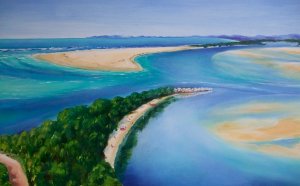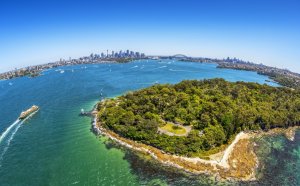
Thirroul, New South Wales
There was clearly a time whenever Thirroul had been a coal mining town - among a daisychain of coastal villages north of Wollongong in which miners existed and worked in regional collieries. Since the electrication of this railway range from Wollongong to Sydney (and Thirroul is among the major stops on that line) the area is now quickly gentrified. Today it's a chic area with specialist delis and cafes, a fashionable, very nearly 'inner city' ambience, and a popular coastline which pulls crowds of people during the hot summer months. Hardly astonishing since when you read D.H. Lawrence's evocative information associated with the rocks during the southern end for the beach 'He liked the sea, the pale water of green glass that dropped this kind of cold foam. Ice-fiery, fish-burning. He went on to the low level stones at reduced tide, skirting the deep pock-holes which were full of brilliantly clear water and delicately-coloured shells and small, crimson anemones. Strangely sea-scooped razor-sharp sea-bitter stone floor, all damp and sea-savage' it is tough never to desire to dive into that 'pale ocean of green cup'.
Place
Thirroul is based 71 km south of Sydney through the Princes Highway (M1, F6) in addition to Bulli Pass. It is only a couple of kilometres toward north regarding the Bulli Pass path in the Grand Pacific Drive.
Origin of title
It is stated the term Thirroul arises from a Wodi Wodi Aboriginal term, 'thurrural', indicating 'the area associated with cabbage tree palms'. This is challenged by a Wodi Wodi elder in 1892 who argued that 'thirroul' intended absolutely nothing therefore the word had been actually 'throon' meaning 'bush leech'. Evidently leeches abounded into the rainforest from the side of the escarpment.
What to See and Do
'Wyewurk' - D.H. Lawrence's House
Wyewurk is a personal dwelling rather than open for assessment. But if you head to Craig Street during the southern end of Thirroul you can be involved in the secret for the presence of novelist D.H. Lawrence. There clearly was a D.H. Lawrence Reserve after the street with a plaque depicting the phoenix (one of his many enduring symbols) with a homage which checks out: "This monument is a tribute to DH Lawrence, one of the greatest article writers associated with the twentieth Century, which arrived here in 1922 and stayed within street. It had been during their stay-in Thirroul he wrote their Australian book Kangaroo. This book gives us an excellent information for the land and the sea around Thirroul, as it was at the 1920s. 'And so the great tree-covered swoop upwards of the tor, into red flame of clouds, red like the fire plants, of sunset.' D.H. Lawrence, Kangaroo." It absolutely was launched on 21 November, 1998.
From May to August 1922 Lawrence existed at 3 Craig Street, a Californian-style bungalow with very good Australian Federation overtones. Viewed from the street (it's behind a top fence) visitors gets no idea of the view however the view from D.H. Lawrence Reserve is extremely similar. Additionally it is possible to go down on the coastline through reserve and circumambulate the stones underneath the house. In Robert Darrock's D.H. Lawrence in Australia the knowledge is quoted as "He liked the sea, the pale ocean of green glass that fell such cold foam. Ice-fiery, fish-burning. He went out to the low flat stones at reduced wave, skirting the deep pock-holes that have been packed with brilliantly pure water and delicately-coloured shells and little, crimson anemones. Strangely sea-scooped razor-sharp sea-bitter stone floor, all wet and sea-savage" and Lawrence described Wyewurk as "the home inside had been dark, along with its deep verandahs like dark eyelids half-closed...overlooking the huge rhythmic Pacific."
History
* Prior to European settlement the Illawarra was in fact occupied because of the Dharawal or Tharawal Aboriginal people for about 20, 000 many years. They roamed across the slim coastal plain, ate seafood and crustaceans they caught in rock pools and existed an idyllic life beside the ocean.
* In 1770 Captain James Cook sailed within the coast. Cook attempted to secure when you look at the Illawarra but had been obligated to come back to his ship because of the heavy search that has been operating at that time.
* After the settlement of Port Jackson in 1788 George Bass and Matthew Flinders, followed closely by their servant William Martin, sailed along the shore in an eight-foot (2.4 m) rowing boat, Tom Thumb, in 1796.
* In 1797 the survivors regarding the Sydney Cove traversed the location to their stroll through the coastline of Victoria. The vessel was beached in the Furneaux Islands in Bass Strait. A boat was released with seventeen associated with the crew but it was wrecked at aim Hicks. The survivors started walking north to Port Jackson but only three survived.
Share this Post
Related posts
Nambucca Heads, New South Wales
Thank you for visiting Eyecare Plus Optometrist Nambucca Heads Local optometrist Eyecare Plus Nambucca Heads target comprehensive…
Read MoreSydney New South Wales Australia weather
A slow-moving storm has actually hammered components of eastern Australia s New South Wales province with damaging winds…
Read More










